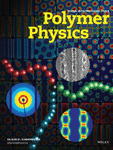Journal list menu
Export Citations
Download PDFs
Cover Image
Cover Image, Volume 56, Issue 22
- Page: C1
- First Published: 09 November 2018
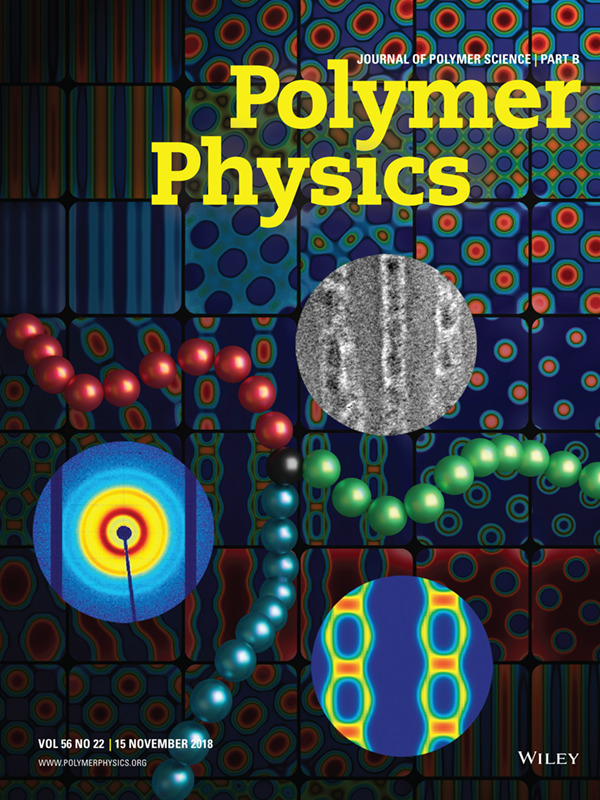
In their work reported on page 1491, Chernyy and colleagues studied an array of morphologies generated by varying the length of the P2VP block in poly(styrene-b-cis-1,4-isoprene-b-2-vinylpyridine, or SIV) miktoarm terpolymers as simulated by self-consistent field theory. The background of the cover image shows these arrays of morphologies. The foreground shows three representative results using transmission electron microscopy, small angle X-ray scattering, and self-consistent field theory calculations for one sample of SIV miktoarm terpolymer in the bulk, surrounding a bead spring model of SIV. The outstanding integration of simulation with experimental results allowed the team to understand the intricate self-assembly across a wide range of the phase diagrams in these interesting materials. (DOI: 10.1002/polb.24733)
Issue Information
Full Papers
On the morphological behavior of ABC miktoarm stars containing poly(cis 1,4-isoprene), poly(styrene), and poly(2-vinylpyridine)
- Pages: 1491-1504
- First Published: 03 October 2018
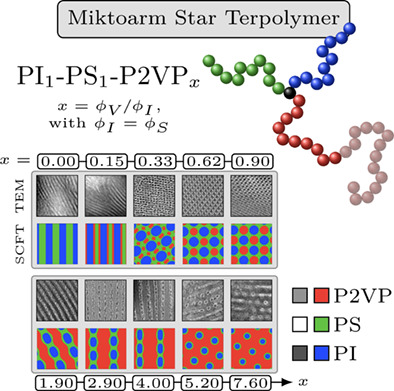
A deeply integrated study of poly(styrene-b-cis-1,4-isoprene-b-2-vinylpyridine) miktoarm star terpolymers interweaving transmission electron microscopy, small-angle X-ray scattering, self-consistent field theory, and rheology, paints a coherent picture of this model system on the intricate self-assembly forming many nonconventional morphologies like, for example, Archimedean tilings. Variation of the P2VP chain length (x) provides access to a plethora of experimental morphologies consistent with simulations. The simulations also reconcile differences encountered between morphologies formed by stars containing cis-1,4-PI studied here, and 3,4-PI reported previously.
The effect of methyl group on the mechanical properties of hydrophobic association hydrogel
- Pages: 1505-1512
- First Published: 16 October 2018

The effect of methyl groups of hydrophobic monomers on the mechanical behaviors of a hydrophobic association hydrogel was explored on the basis of rubber elastic theory. It was found that the methyl groups of hydrophobes increased the rigidity of hydrophobic polymer chains in the association micro-domain, resulting in the increment of the extent of chain constraints in the hydrogel network. Therefore, the hydrogels with methyl exhibited a poor response to external force and poor self-recovery properties.
Structure and optical properties of transparent polyamide 6 containing lithium bromide
- Pages: 1513-1520
- First Published: 19 September 2018
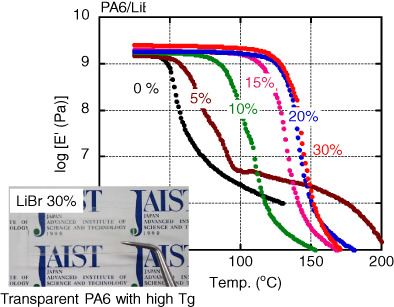
The effects of lithium bromide (LiBr) on the structure and properties of polyamide 6 (PA6) are investigated using samples prepared by melt mixing. The optical properties of the polymer, such as orientation birefringence and stress-optical coefficient in the glassy state, were also studied. The addition of LiBr enhances the glass transition temperature of PA6, with a great improvement in transparency.
Stretch-Induced Melting and Recrystallization of Polyethylene-Plasticizer Film Studied by In Situ X-Ray Scattering: A Thermodynamic Point of View
- Pages: 1521-1528
- First Published: 08 October 2018
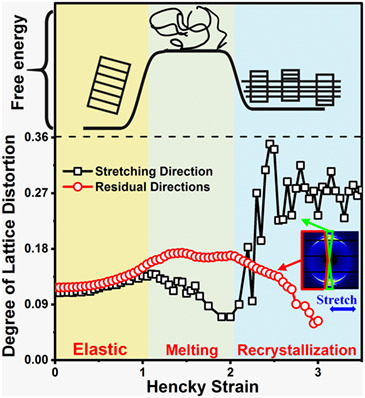
By analyzing the evolution rule of structural parameters quantitatively, a stretch-induced melting and recrystallization model is proved to be responsible for the plastic deformation of the semicrystalline polymer system. Also, the physical essence of melting is validated to be elastic-driven phase transition, after which the recrystallization of the transient melt is solely controlled by temperature.
Thermal, mechanical, and topographical evaluation of nonstoichiometric α-cyclodextrin/poly(ε-caprolactone) pseudorotaxane nucleated poly(ε-caprolactone) composite films
- Pages: 1529-1537
- First Published: 04 October 2018
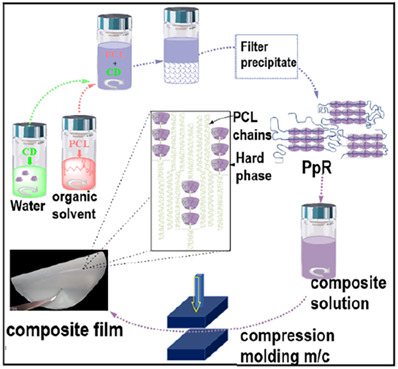
Improving the mechanical and topographical properties of biomedical polymers such as poly(ε-caprolactone) (PCL) is a paramount factor in improving its interaction with biological systems. A major aspect of this work is to demonstrate the mechanical and topographical properties of PCL containing pseudorotaxanes (PpRs), which are comprised of PCL and nontoxic α-cyclodextrin as nucleants. By varying stoichiometric ratios and loading of PpRs, composite films were prepared that showed modulated and improved mechanical and topographical properties.




